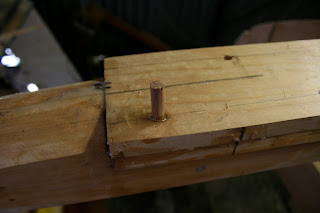Hello again!
Once more not a post about the boat, but about a lovely opportunity. Those who know me know I paint, as well as pretend to be a boat-builder. I went to Monash University in my long-ago youth (heh) and completed a Bachelor of Fine Art. It was... interesting.
My painting has somewhat dwindled since starting my career in education, and I've conversely developed that unenviable quality of man-ness wherein something strange happens and you suddenly have an urge to build enormous things in sheds that are kinda too small... I still tinker with painting, but with nothing like the industry with which I used to apply myself to it.
I'm mostly a painter who tries to capture an emotion from a visual experience, which needless to say isn't as easy as it sounds. I'm pottering along with this post as the lovely group over at design company Kish and Co. have given me an opportunity to exhibit in a small show they're having, and bloggy karma being what it is, I'm spreading their good, charitable deeds! They're young, dynamic and growing which are 3 great things in a design company. Check 'em out sometime. Meanwhile, be regaled with my wonderful (snigger) paintings of yesteryear. Maybe this is the jolt I need to get going!
(Click through for large versions)





These 5 were some recent paintings, all in the roughly A4 ballpark. They were exhibited at Flinders Lane Gallery , and consequently I don't have many of them anymore!
The following are some older drawings and paintings from my university (and high-school) days.

The following are some older drawings and paintings from my university (and high-school) days.



(The next 3 are in the 2mx1.6m range)





And yes! That's some paintings. It's a bit of a cross section of a few years worth. Lets call it a highlight reel.
Until next time,
Little Cat Ember.










































